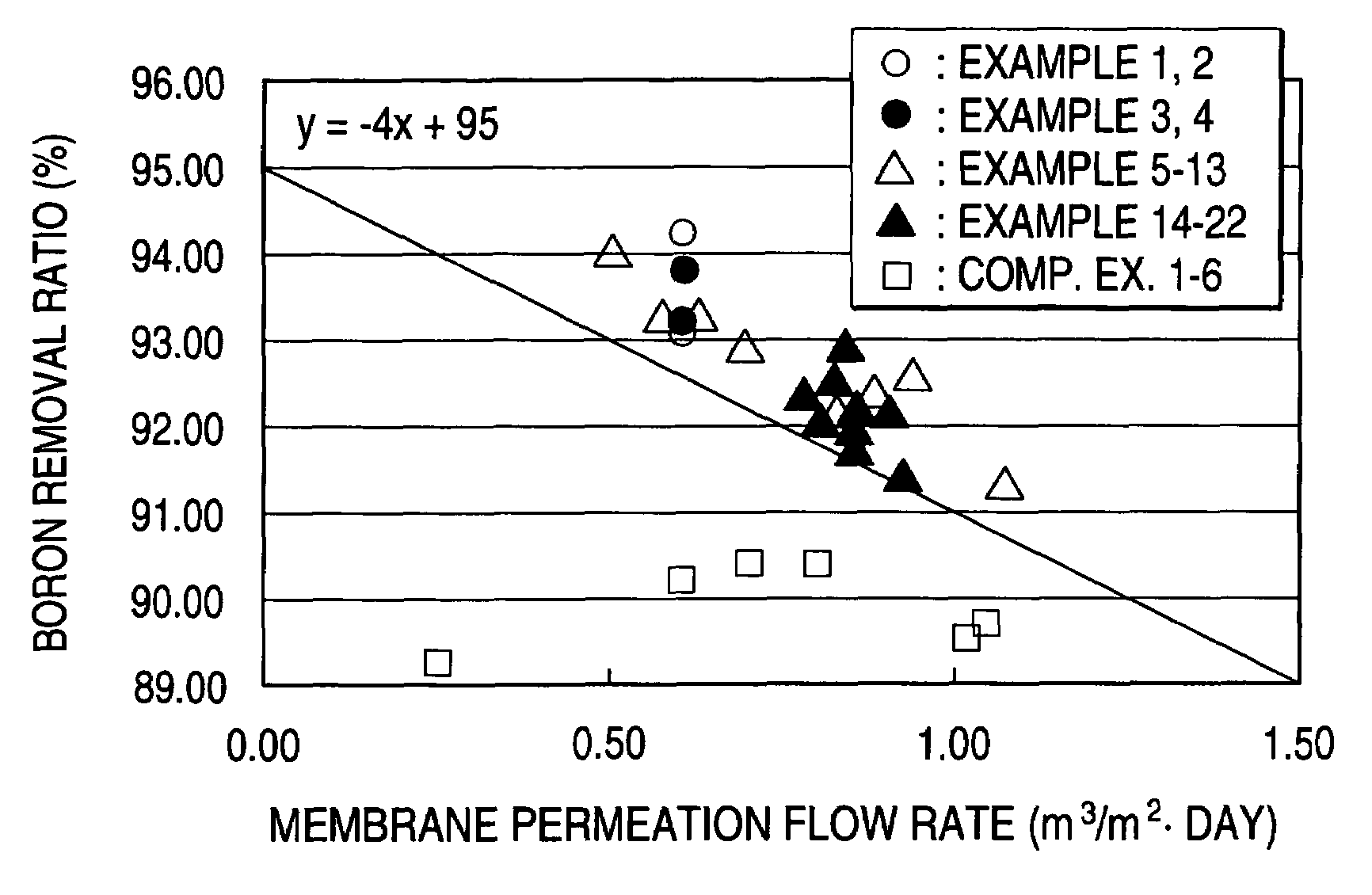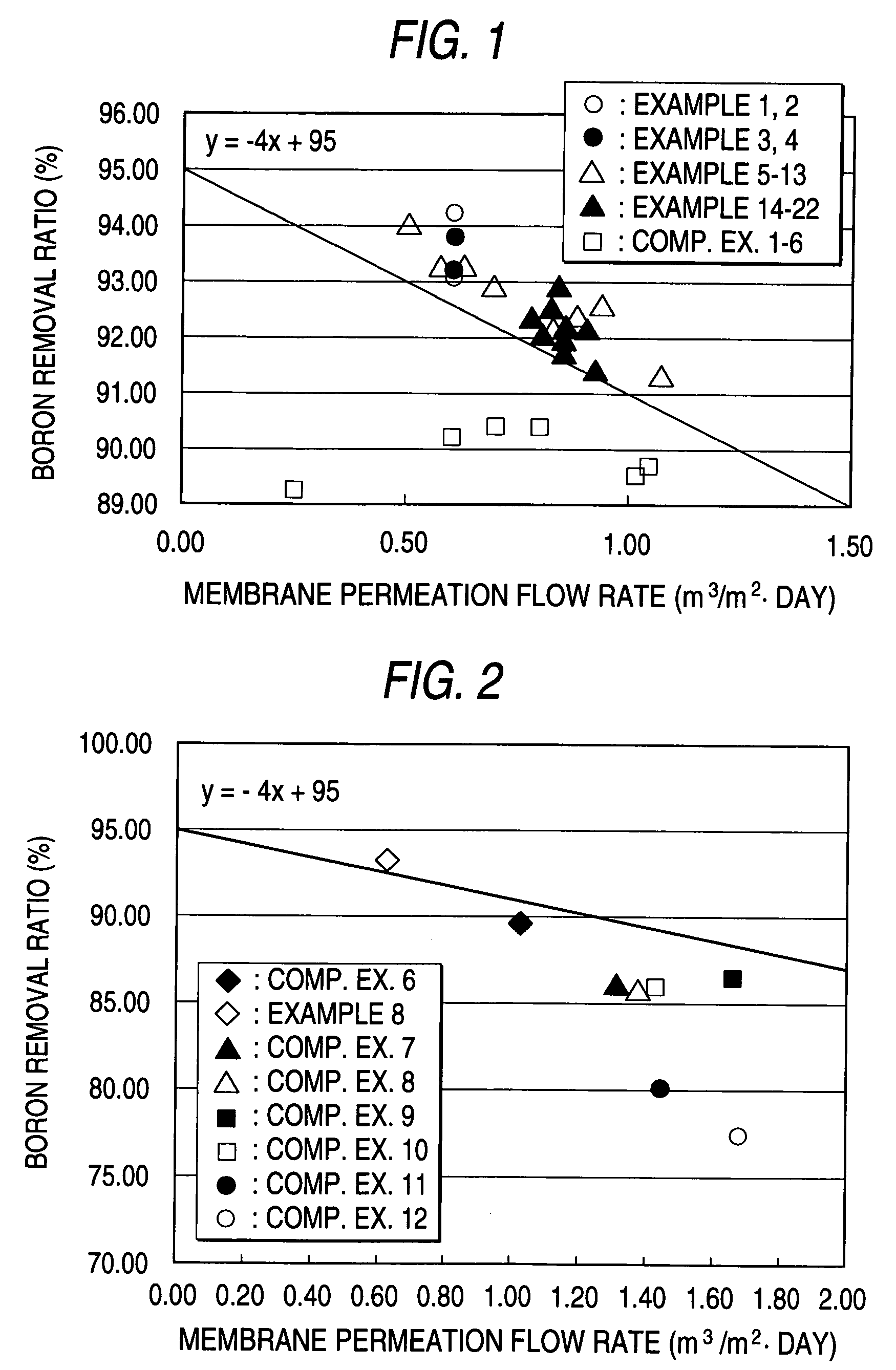Composite semipermeable membrane, and production process thereof
a semi-permeable membrane and semi-permeable technology, applied in the direction of membranes, filtration separation, separation processes, etc., can solve the problems of increasing the water quality standard in the art, and still being unable to increase the boron rejection ratio according to the method, and achieve high salt removal ratio and high rejection performance.
- Summary
- Abstract
- Description
- Claims
- Application Information
AI Technical Summary
Benefits of technology
Problems solved by technology
Method used
Image
Examples
examples 3 and 4
[0114]The same porous substrate film as in Examples 1 and 2 was dipped in an aqueous amine solution containing polyfunctional amine as in Table 2, for 2 minutes, then gradually pulled up in the vertical direction, exposed to nitrogen blow from an air nozzle to thereby remove the excess solution from the surface of the substrate film, and then an n-decane solution containing 0.12% trimesic acid chloride and 0.18% terephthalic acid chloride was applied to it so as to completely wet its surface, and kept as such for 1 minute. Next, the film was vertically held for 2 minutes so as to remove the excess solution from it, and the film was dewatered in that manner. Next, an aqueous amine solution containing monofunctional amine as in Table 2 and 0.3% sodium dodecylsulfate was applied to the film, and the film was then exposed to nitrogen blow from an air nozzle to thereby remove the excess solution from the surface of the film. Then, this was washed with hot water at 90° C. for 2 minutes, a...
examples 14 to 22
[0122]The same porous substrate film as in Examples 1 and 2 was dipped in an aqueous solution of 3.4% m-phenylenediamine, then gradually pulled up in the vertical direction, exposed to nitrogen blow from an air nozzle to thereby remove the excess solution from the surface of the substrate film, and then an n-decane solution of polyfunctional aromatic acid halide as in Table 4 was applied to it so as to completely wet its surface, and kept as such for 1 minute. Next, the film was vertically held for 1 minute and dewatered. Next, an n-decane solution of an aliphatic acid halide as in Table 4 was applied to it so as to completely wet its surface, and kept as such for 1 minute. Then, this was vertically held for 1 minute and dewatered. Next, this was dried in air to remove the decane solvent, and then washed with running tap water so as to remove the chemicals remaining in the film. Then, this was washed with hot water at 90° C. for 2 minutes, and dipped in an aqueous solution of sodium...
PUM
| Property | Measurement | Unit |
|---|---|---|
| pH | aaaaa | aaaaa |
| pressure | aaaaa | aaaaa |
| thickness | aaaaa | aaaaa |
Abstract
Description
Claims
Application Information
 Login to View More
Login to View More - R&D
- Intellectual Property
- Life Sciences
- Materials
- Tech Scout
- Unparalleled Data Quality
- Higher Quality Content
- 60% Fewer Hallucinations
Browse by: Latest US Patents, China's latest patents, Technical Efficacy Thesaurus, Application Domain, Technology Topic, Popular Technical Reports.
© 2025 PatSnap. All rights reserved.Legal|Privacy policy|Modern Slavery Act Transparency Statement|Sitemap|About US| Contact US: help@patsnap.com



